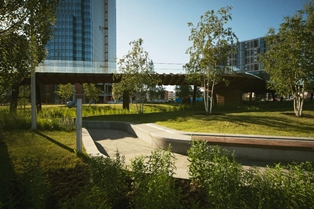In the hustle and bustle of modern life, we often find solace and tranquility in spaces devoid of the confines of woods and buildings. These open areas, whether they are expansive plains, lush meadows, or vast deserts, offer a unique sense of freedom and connection with nature. But what exactly constitutes an open area free of woods and buildings, and what makes them so special? Let’s delve deeper into the concept and explore the beauty and purpose of these remarkable landscapes.
Defining Open Areas:
An open area, as the name suggests, refers to any space that is devoid of dense vegetation such as forests or buildings. It encompasses a wide range of landscapes, including grasslands, prairies, savannas, deserts, tundras, and more. What sets these areas apart is their vast expanse of open sky and uninterrupted views, allowing for a sense of spaciousness and freedom that is often lacking in urban environments.
Characteristics and Significance:
Open areas offer numerous benefits to both humans and the environment. From a recreational standpoint, they provide ample space for outdoor activities such as hiking, camping, picnicking, and stargazing. These spaces also serve as vital habitats for a diverse array of plant and animal species, playing a crucial role in maintaining ecological balance and biodiversity.
Moreover, open areas contribute to the overall health of the planet by absorbing carbon dioxide, mitigating climate change, and regulating water cycles. Grasslands, for example, act as carbon sinks, helping to sequester carbon from the atmosphere and prevent soil erosion. Similarly, wetlands play a crucial role in filtering pollutants from water and providing habitat for migratory birds and other wildlife.
Cultural and Historical Significance:
Throughout history, open areas have played a central role in shaping human culture and civilization. Nomadic tribes traversed vast grasslands in search of food and water, while early agricultural societies settled in fertile river valleys to cultivate crops. Many indigenous cultures hold deep spiritual connections to the land, viewing open areas as sacred spaces imbued with ancestral wisdom and natural beauty.
Furthermore, open areas have inspired countless artists, writers, and poets to capture their essence in works of art and literature. The vastness of the plains, the majesty of the mountains, and the serenity of the desert have all served as sources of inspiration for creative expression and exploration of the human condition.
Preservation and Conservation:
In light of their ecological, recreational, and cultural significance, it is imperative that we prioritize the preservation and conservation of open areas. Threats such as deforestation, urbanization, overgrazing, and climate change pose significant challenges to the integrity of these landscapes. Efforts to protect and restore open areas must focus on sustainable land management practices, habitat restoration, and community engagement.
Conclusion:
Open areas free of woods and buildings are more than just empty spaces; they are living, breathing ecosystems teeming with life and history. From the vast plains of the American Midwest to the rugged beauty of the Australian Outback, these landscapes offer a profound sense of connection to the natural world and serve as reminders of our shared responsibility to protect and cherish the planet we call home. So the next time you find yourself surrounded by open space, take a moment to appreciate the beauty and significance of these remarkable landscapes.











Find Us on Socials